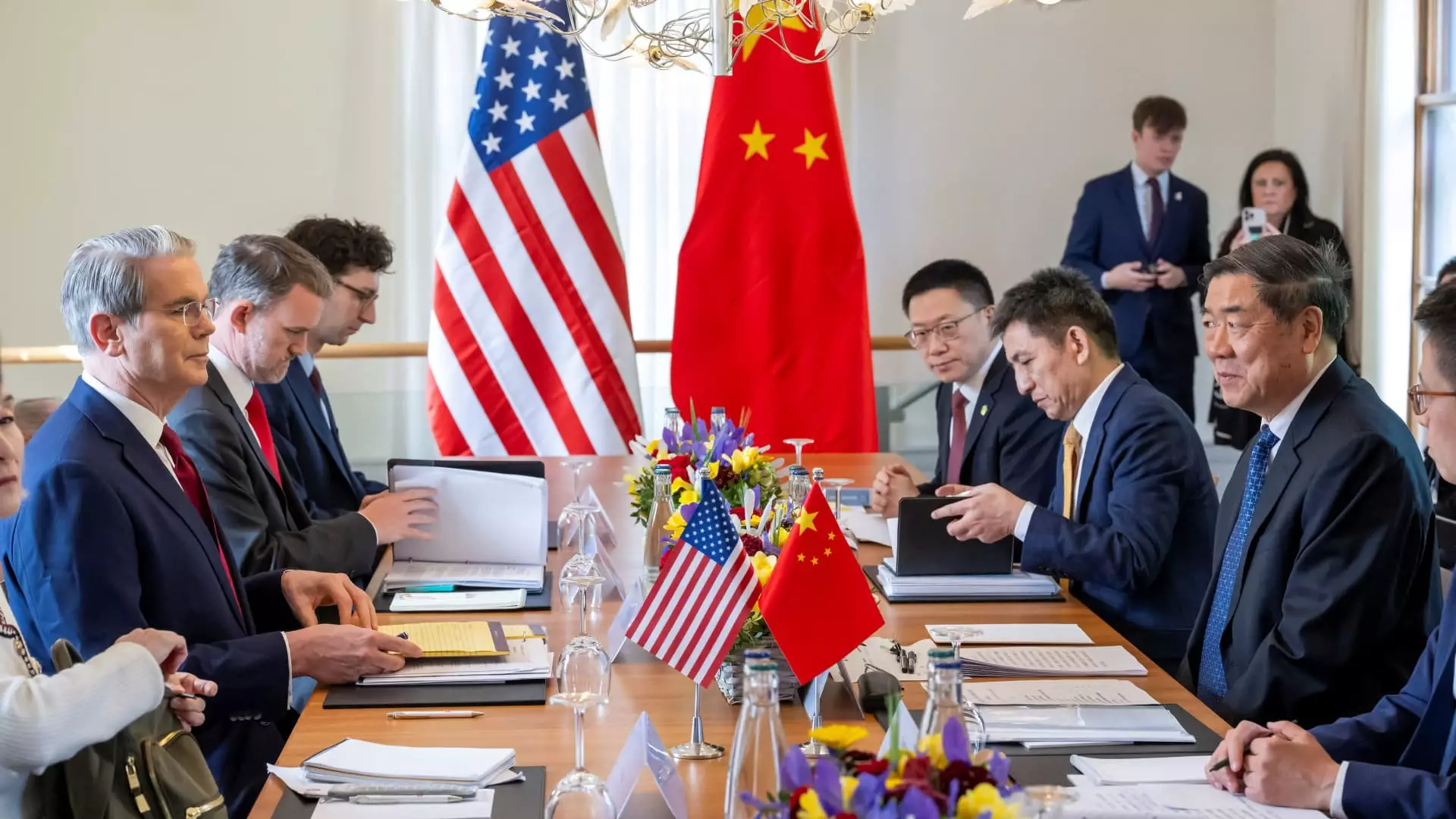In a dramatic turn of events, China has publicly condemned the United States for what it perceives as a flagrant disregard for the preliminary trade agreement established between the two nations. The tension intensified after the U.S. issued a warning regarding the use of Chinese semiconductors, specifically pointing fingers at technological giant Huawei. This latest clash not only highlights the fragile nature of trade relations between two global superpowers but also unveils deep undercurrents of mistrust and strategic maneuvering on both sides.
China’s Commerce Ministry did not shy away from expressing its outrage, labeling the U.S. guidance as “discriminatory” and “market distorting.” Such strong terminology is not merely diplomatic lingo but signals a potential for further escalation. The statement demands that the Trump administration “correct its mistakes,” a phrase that insinuates a clawback of perceived injustices inflicted upon China. This situation exemplifies the complexities lining America and China’s economic ties and sets the backdrop for a possible impasse.
Missed Opportunities and Exaggerated Threats
The notion that the U.S. is using bureaucratic channels to tighten export controls on Chinese chips raises serious questions about America’s true goals. The U.S. Department of Commerce’s recent warnings about Huawei’s Ascend chips—accused of being developed in defiance of export regulations—demonstrates a level of paranoia that borders on paranoia. Are American authorities attempting to protect national security, or are they simply playing a double game that seeks to maintain U.S. dominance in the tech arena while inadvertently jeopardizing global collaboration?
This move comes at a critical juncture, just days after the Trump administration proclaimed a “truce” in their trade war with China. The 90-day tariff pause was painted as a victory for both nations; however, this new guidance may undermine that fragile truce and could potentially revive pre-existing hostilities. The U.S. stance on China’s technological capabilities, especially regarding semiconductors, could easily morph into a barrier stifling progress and cooperation. This sentiment reminds us that trade disputes often hit below the belt, affecting not just economic relations but also geopolitical stability.
The Consequences of Unilateralism
China’s reaction to the U.S. warnings sheds light on a more profound concern—unilateral actions that perpetuate a cycle of tit-for-tat. Aside from simply being a “bully,” as China describes the U.S., these aggressive measures might ultimately backfire on American interests. The spokesperson for the Chinese government warned that America’s practices harm legitimate rights of Chinese firms while generating instability in the global semiconductor supply chain. This speaks to a larger narrative where both countries cut their noses to spite their faces, undermining not only trade relationships but the very fabric of international collaboration in technology.
Moreover, the hyper-focus on isolating and containing China’s tech development could jeopardize the credibility and competitiveness of U.S. industries. If national policies focus predominantly on breaching barriers rather than breaking grounds in innovation, the result could inevitably resonate back on home soil. The ramifications of unilateral protectionism are not just felt by the intended target; they reverberate throughout the global marketplace.
A Call for Strategic Rethink
The current trajectory is reminiscent of the cold war mentality—where virtue signaling and posturing have taken precedence over pragmatic problem-solving. A zero-sum game where the loss of one is intended to signify a win for the other does nothing but stagnate advancements that could benefit both parties. In urging the U.S. to “correct its wrong practices,” China is essentially asking for a cooperative approach to negotiations rather than a competitive showdown.
In this landscape of escalating tensions, it is essential for both nations to engage in a thoroughly reconsidered dialogue that transcends mere rhetoric. The stakes are markedly high, not just for trade but for global technological innovation and scientific growth. With all eyes watching, both the United States and China are at a crossroads that demands a reevaluation of their priorities and long-term goals. The question remains: will they choose cooperation or conflict?

Leave a Reply